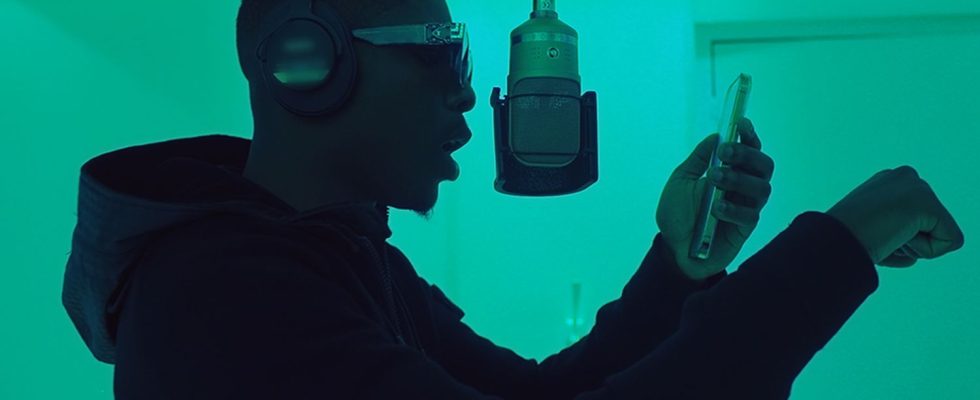Popularized at the turn of the 2000s, Auto-Tune, this voice correction software, has become essential, especially in rap, of which it has been the essential aesthetic marker for a few years. But will it be forever?
Jay-Z announced his death in 2009 in DOA (Death of Auto-Tune) and he was all wrong: whether you love it or hate it, Auto-Tune is everywhere today. It was time to take a closer look at this voice correction tool that has become an essential phenomenon in music, as does this documentary web series in six episodes of 8 to 10 minutes each, to be seen on arte.tv since July 4 (and until 2026).
A revolution in rap
The American engineer Andy Hildebrand invented it 26 years ago and in 2023 this software, which allows everyone to sing in tune, is present on almost all vocal albums released in the world. Spotted for the first time in 1999 on a hit by Cher, believebecause it was purposefully used in an extreme way, Auto-Tune became much more than a voice correction tool: it was contemporary digital vocal aesthetics.
In rap in particular, he changed a lot of things. After being considered for a few years as a cheat to be avoided, which was only used in secret, it ended up imposing itself massively. It was first Teki Latex of TTC which seized it in 2002 on liquid helium of The Army of 12, then it was PNL in a particularly intelligent and personal way to express his existential spleen (“I’m not a rapper, without vocoder, I’m slammed“, sang Ademo in Mowgli), paving the way for the essential JUL, now imitated even abroad. The phenomenon is such that rappers who don’t really need it are getting into it too, to stay in the game or out of fear that we might think they’re singing out of tune.
Above all, this tool has made it possible to uninhibit rappers by pushing them to assume more of themselves as singers, daring to use refrains previously provided by female singers, and at the same time to change their way of constructing songs. This melodic contribution, which also allows a new vulnerability to pass through, has contributed to opening wide the doors of the mass success they enjoy today in France.

Will Auto-Tune as an aesthetic survive for long?
This documentary web series has the merit of asking the right questions about this revolution and bringing to life the debate between those who believe, like rock critic Philippe Manoeuvre, that Auto-Tune “artistic level, it’s zero points” (especially because in the event of a breakdown, it’s appalling live), and those who, like the journalist and producer SHKYD, consider him “ano kind of esperanto” able to “destroy borders“. If the truth lies somewhere in between, the undeniable uniformity to which Auto-Tune leads – everyone sings in tune, but everyone has more or less the same digital timbre – is not necessarily guarantee of eternity: like other modes before it, it too will end up being outdated, as prophesied by PNL producer NK.F.
This clear, lively and well-constructed series collects the words of many speakers, producers, rappers, singers and journalists, from Medina to Soprano, K-Reen, Lujipeka, Youssoupha, Aloïse Sauvage or Mehdi Maïzi. However, we would have liked the documentary to expand the subject beyond rap. Because if the rappers have monopolized this tool in transparency and in all honesty, this is not the case elsewhere. Auto-Tune and increasingly sophisticated software today make up for in complete discretion, in the studio as well as live, the lack of voice and accuracy of many artists celebrated by the very people who vomit Auto-Tune. Tune (and often rap).
“Auto-Tune: from Cher to PNL, the Photoshop of the voice”, a documentary web series in six episodes by Simon Clair and Corentin Coëplet to see on arte.tv until June 2026
